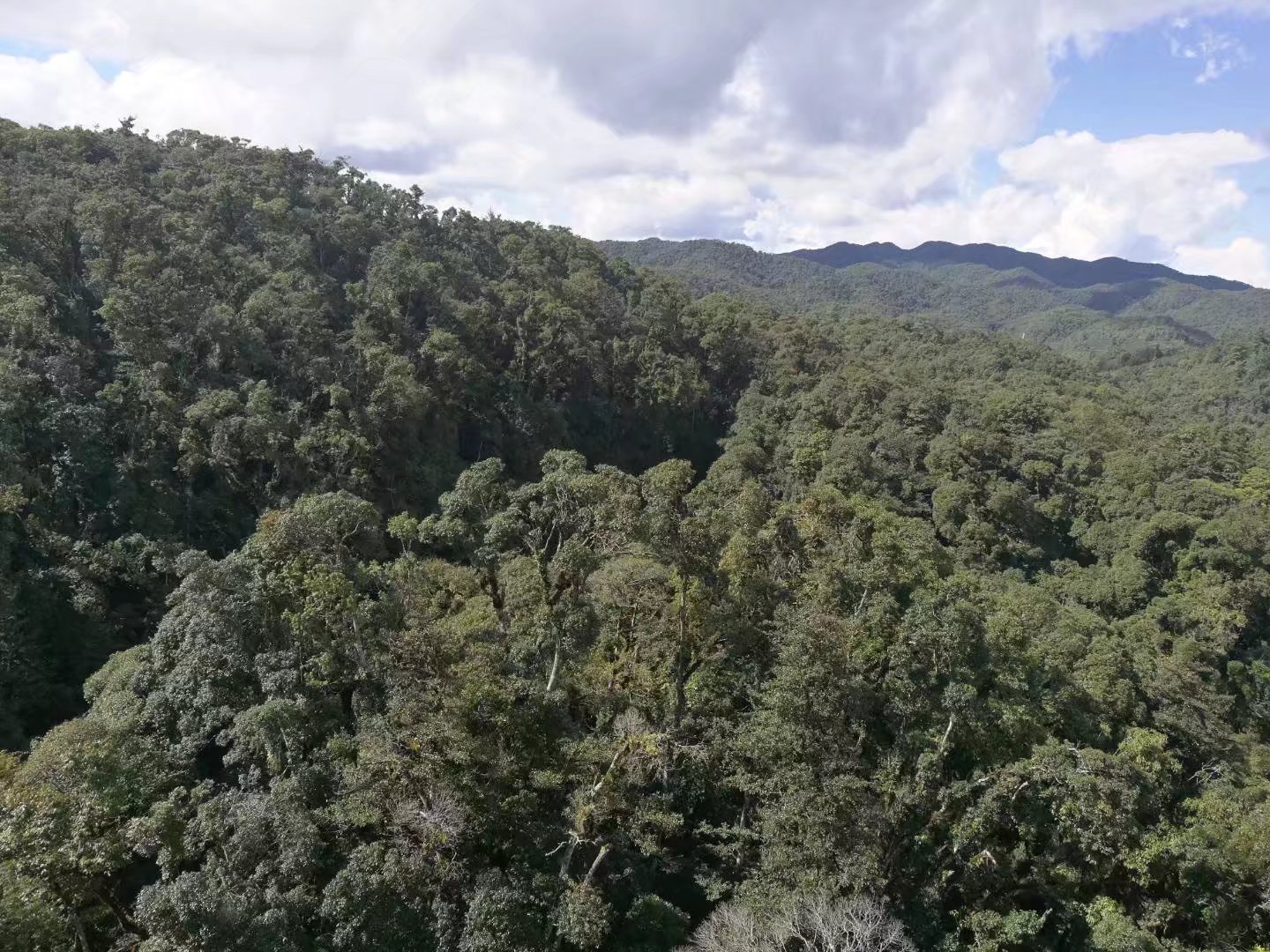The atmospheric carbon dioxide (CO2) concentration has been continuously increasing after the Industrial Revolution, and the increase in CO2 concentration will have an important impact on the physiological function and growth of plants. However, few studies have focused on how the hydraulic structure and growth of plants in subtropical zones respond to elevated CO2 concentrations.
In a study published in Agricultural and Forest Meteorology, researchers from Xishuangbanna Tropical Botanical Garden (XTBG) and their collaborators investigated the effects of increased CO2 concentration on leaf gas exchange, nitrogen and phosphorus concentrations, leaf and stem hydraulic conductivity, and growth of seedlings of four evergreen and four deciduous tree seedlings in Ailaoshan subtropical forest in Yunnan.
The researchers conducted a well-watered potted seedling experiment by using the CO2 artificial climate chambers with an inside area of 14 m2 and a height of 2.6 m at Ailaoshan Ecological Station of XTBG. After one year of treatment, they measured the leaf gas exchange, leaf nitrogen and phosphorus concentrations, leaf hydraulic conductance, and stem hydraulics of the four evergreen and four deciduous species.
It was found that elevated CO2 concentration caused an increase in the photosynthetic rate per unit leaf area and a decrease in stomatal conductance in both evergreen and deciduous plants, while the promotion effect on the photosynthetic capacity per unit leaf dry weight of evergreen plants was stronger than that of deciduous plants. The biomass of both evergreen and deciduous plants increased with increasing CO2 concentration, with greater variation among species of evergreen plants.
Compared with evergreen plants, the leaf specific conductance of deciduous plants was promoted more strongly by increasing CO2 concentration, and changes in leaf specific conductance under conditions of elevated CO2 concentration were mainly affected by biomass. Increased CO2 concentration promoted the synergistic relationship between water transport capacity of branches and leaf gas exchange, phosphorus content, and biomass.
"Our study may contribute to predict changes in tree physiological characteristics, growth, and community succession in subtropical forests in the context of climate change,” said FAN Zexin of XTBG.
Contact
FAN Zexin Ph.D Principal Investigator
Key Laboratory of Tropical Forest Ecology, Xishuangbanna Tropical Botanical Garden, Chinese Academy of Sciences, Mengla, Yunnan 666303, China
E-mail:fanzexin@xtbg.org.cn
Published: 27 April 2024

Ailaoshan subtropical forest. (Image by XTBG)

